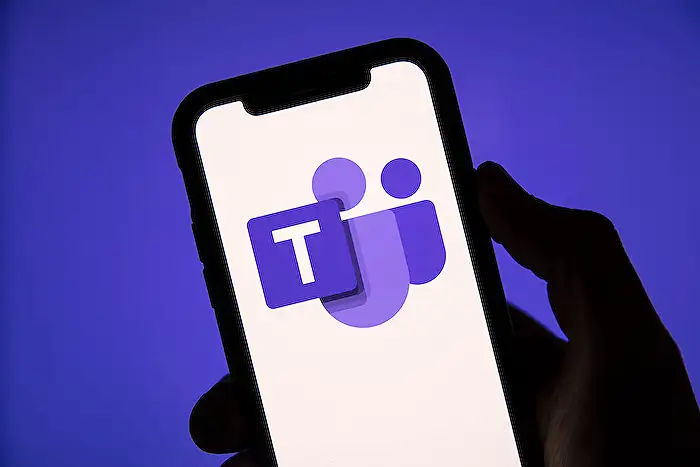
Microsoft Teams: 9 New Features (2025)
Helping you and your company achieve more in Microsoft 365
Microsoft expert previews Microsoft Teams updates: Teams Calendar, Copilot Workflows, smarter search, Threads, Teamflect
Key insights
- Threads in Channels — Reply to specific messages so conversations stay focused and context is preserved.
Threads reduce clutter in busy channels and make it easier to follow decisions. - Copilot and AI Agents — Use AI assistants in channels, meetings, and workflows to summarize discussions, draft content, and surface insights.
Developers can extend the Teams AI library to build smarter collaborative agents. - Calendar upgrades — Access shared calendars directly in the new Teams Calendar and use improved filters to stay organised.
These changes make scheduling and cross-team coordination faster and clearer. - Meeting tools — New meeting features include a Meeting Timer, a visual mic indicator, redesigned in-meeting controls, slide control for presenters, and voice isolation for clearer audio.
Together they help meetings run on time and feel more professional for remote and hybrid teams. - Search and messaging improvements — Find attachments and messages faster with enhanced attachment search and a richer query language; view chats and channels together for smoother switching.
You can also schedule channel posts to plan announcements ahead of time. - Admin and telephony updates — Admins get new options for organizational hierarchies and email domain selection, while Teams Phone adds contact-center integrations for stronger customer service workflows.
Additional tweaks include keyboard shortcuts, easier Loop component sharing, and expanded device support.
Overview: What Scott Brant Demonstrates
In a concise tutorial video, Scott Brant walks viewers through nine notable updates to Microsoft Teams for 2025, aiming to help users work smarter and collaborate more efficiently. He highlights changes across meetings, calendars, chat, and AI features, and he frames the walkthrough as practical guidance for day-to-day use. Moreover, the video includes a brief mention of Teamflect as a complementary people-management tool, though the demonstration focuses primarily on core Teams improvements. Consequently, the piece serves both as an introduction for casual users and as a checklist for IT and communications teams preparing to roll out the updates.
User-Facing Productivity Enhancements
Several of the changes Scott shows center on reducing friction in everyday work. For example, the updated Teams Calendar now supports direct access to shared calendars and offers improved filtering, which helps teams coordinate schedules without switching apps or losing context.
Additionally, the video highlights refinements to meetings and chats, such as a new meeting timer, a visual mic indicator to avoid speaking while muted, a redesigned in-meeting control panel, and an enhanced attachment search in chats and channels. These updates jointly target common pain points: staying on time, maintaining meeting etiquette, and finding content quickly, which should reduce small but frequent productivity losses.
AI, Copilot, and Intelligent Assistance
Scott emphasizes the growing role of AI in Teams, noting that the Workflows app now integrates with Copilot and that channels, meetings, and communities can host AI agents to summarize discussions and generate content. He also points out the updated Teams AI Library for developers, which may encourage tailored agents that fit specific organizational needs.
However, he also raises implicit tradeoffs: while AI speeds routine tasks and boosts meeting outcomes, it introduces concerns about accuracy, data governance, and user trust. IT teams must therefore balance the productivity gains against governance needs, ensuring that models respect privacy, comply with policies, and remain auditable.
Conversation Design and Collaboration Controls
One of the standout changes is the formal arrival of threaded replies in channels, which Scott shows can dramatically improve discussion clarity in high-traffic spaces. Likewise, the combined chat-and-channels view aims to reduce context switching by letting users see both conversation types side by side, which can improve focus during busy workdays.
At the same time, Scott acknowledges tradeoffs around simplicity versus structure: threads help maintain context, but they can add visual complexity for users accustomed to a single stream of messages. Training and a few well-defined team norms will therefore be important to realize the benefits without confusing participants.
Administration, Telephony, and Manageability
From an administrative perspective, Scott reviews several management-oriented updates such as enhanced options for organizational hierarchies, the ability to choose email domains for Teams Email Service, and expanded telephony extensibility for contact centers. These features give IT teams more tools to align Teams with enterprise architecture and customer-service workflows.
Nevertheless, the video underscores a common challenge: greater configurability often means a steeper setup and governance burden. Admins must weigh the advantages of richer telephony and contact-center integration against the costs of deployment, staff training, and ongoing support, especially when integrating with solutions like Dynamics or third-party CCaaS platforms.
Adoption Considerations and Practical Steps
Scott wraps up by summarizing how these nine updates collectively move Teams toward a more contextual, AI-enabled collaboration platform. He suggests that organizations pilot changes with small groups, refine permissions and policies, and prepare short training sessions to help users adapt, since smooth adoption depends as much on people and process as it does on features.
Finally, while the new features improve hybrid and remote work scenarios, they also demand thoughtful decisions about licensing, device support, and accessibility. Therefore, organizations should balance innovation with caution, testing performance impacts and security configurations before a broad rollout to ensure the changes deliver real improvements without unintended side effects.

Keywords
Microsoft Teams 2025 updates, Teams new features 2025, Microsoft Teams AI features, Teams meeting updates 2025, Teams collaboration tools 2025, Microsoft Teams admin updates, Teams app integrations 2025, Microsoft Teams roadmap 2025